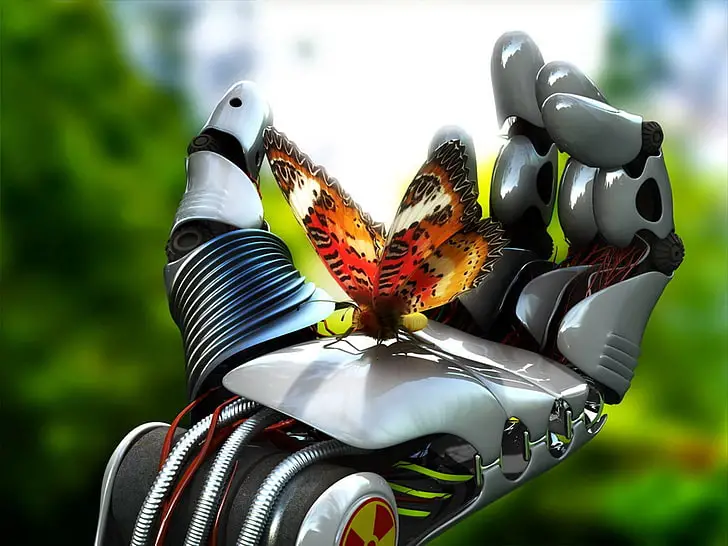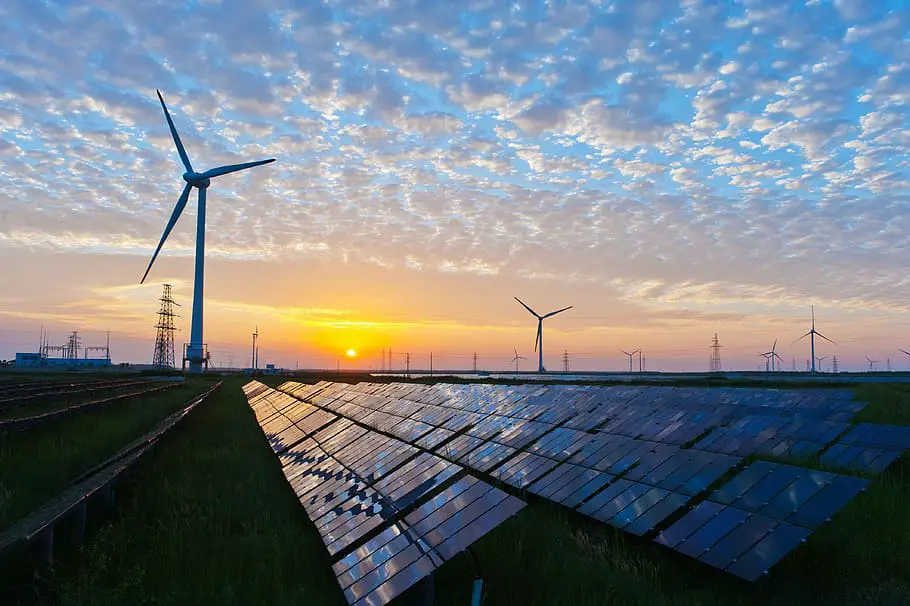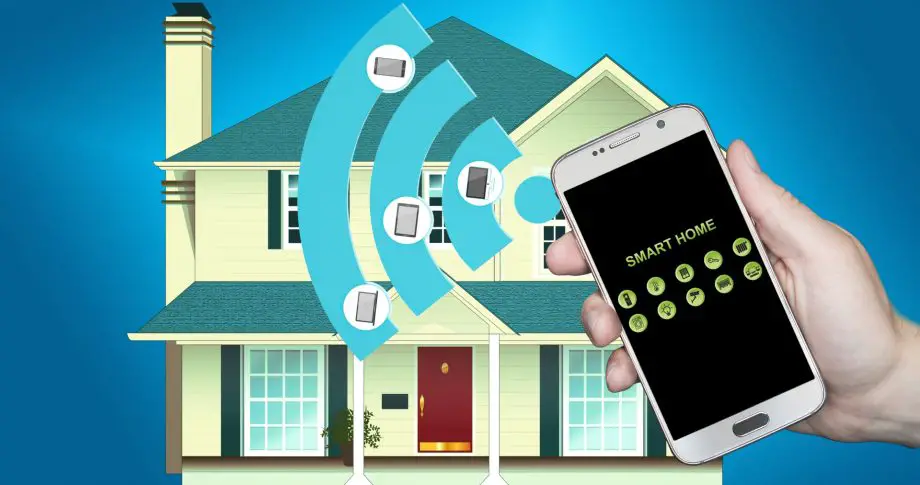
Discover the 5 goals of green technology, challenges, and solutions, and how they’re shaping a sustainable future. Dive into our guide for insights and examples!
Ever wondered how we can make our planet greener while still enjoying the benefits of modern technology?
Well, the answer lies in the 5 goals of green technology. These goals are the guiding principles that are steering us toward a sustainable future.
So, let’s embark on this enlightening journey together, exploring each goal and understanding how they’re reshaping our world for the better!
5 Goals of Green Technology
Welcome to our deep dive into the 5 goals of green technology. In this post, we’ll be exploring these pivotal objectives that are driving the green tech revolution.
From balancing energy sources to enhancing energy efficiency, we’ll unpack each goal and its significance.
We’ll also delve into the impacts of green technology, its challenges, and some real-world examples.
Plus, we’ve got a handy FAQ section to answer your burning questions.
So, buckle up, and let’s journey into the fascinating world of green technology together!
Definition of Green Technology
Green technology, often referred to as clean technology, environmental technology, or sustainable technology, is a fascinating field that’s all about harnessing the power of innovation for the good of our planet.
It’s a broad term that encompasses a variety of technological processes, methods, and products designed to minimize harm to the environment.
Whether it’s about reducing carbon emissions, recycling waste, or promoting renewable energy, green technology is at the forefront of these eco-friendly initiatives.
It’s like giving Mother Nature a high-tech helping hand!
Importance of Green Technology
Now, you might be wondering, why is green technology so important. Well, let’s think about the world we live in.
Our planet is facing significant environmental challenges, from climate change to deforestation and pollution.
That’s where green technology steps in.
It’s not just about creating solutions that are good for the environment, but it’s also about transforming the way we live, work, and play to ensure a sustainable future for generations to come.
Green technology is our ticket to a cleaner, greener, and more sustainable world. It’s not just a trend, but a necessity in our rapidly changing world.
The Goals of Green Technology
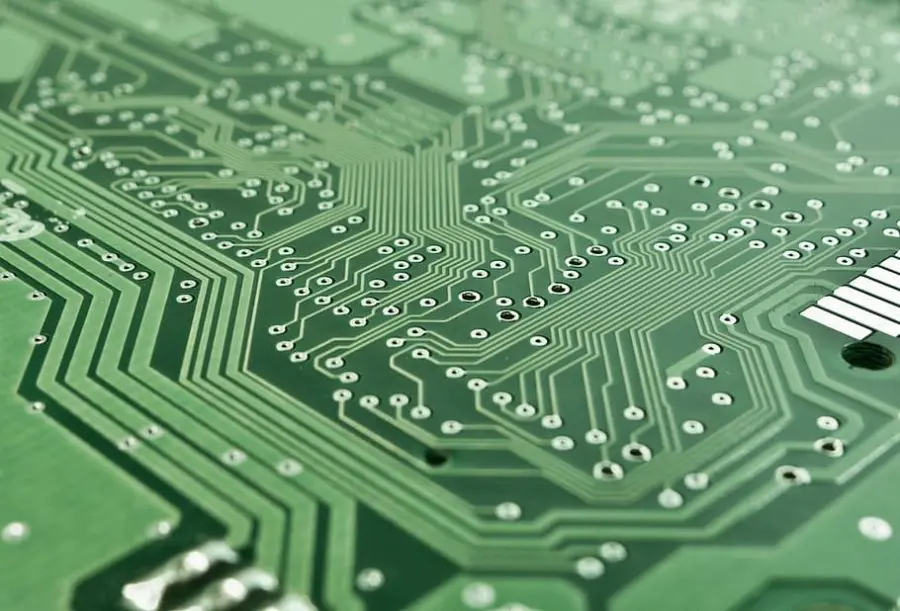
Now that we’ve dipped our toes into the world of green technology, let’s dive deeper into the heart of the matter and the 5 goals of green technology.
These goals are the guiding lights that steer the direction of green tech innovations and practices.
They’re not just objectives; they’re the pillars that uphold our vision for a sustainable future.
From creating a balance of energy sources to enhancing energy efficiency, each goal plays a crucial role in shaping our world.
So, let’s get started and explore these goals one by one!
Goal 1: Create a Balance of Energy Sources
Creating a balance of energy sources is the first goal of green technology.
It’s all about reducing our reliance on non-renewable energy sources like fossil fuels and embracing renewable ones like solar and wind.
But it’s not just about switching from one to the other. It’s about finding the right balance that ensures our energy needs are met without compromising the health of our planet.
It’s like walking a tightrope, but with green technology on our side, we’re finding the right footing.
Goal 2: Save Renewable Energy Sources
The second goal is to save renewable energy sources. You might be thinking, Aren’t renewable sources infinite?
While it’s true that the sun and wind aren’t going anywhere anytime soon, the resources and infrastructure needed to harness these energies are not unlimited.
Green technology aims to optimize the use of renewable energy, ensuring we’re not depleting these resources faster than we can replenish them.
It’s about making the most of what Mother Nature gives us, without taking more than we need.
C. Goal 3: Save Nature From Over Exploitation
The third goal of green technology is to save nature from over-exploitation.
From deforestation to overfishing, our natural resources are under immense pressure.
Green technology seeks to curb this overexploitation, promoting sustainable practices that respect and preserve our natural world.
It’s about recognizing that we’re part of a larger ecosystem and that every action we take can have a ripple effect on the environment.
D. Goal 4: Creating Clean Energy
Creating clean energy is the fourth goal of green technology.
This goal is all about reducing our carbon footprint by promoting energy sources that emit little to no greenhouse gases.
From solar panels to wind turbines and beyond, green technology is leading the charge in clean energy innovation.
It’s not just about powering our homes and businesses; it’s about doing so in a way that respects and protects our planet.
E. Goal 5: Energy Efficiency
Last but certainly not least, the fifth goal of green technology is energy efficiency. This goal is all about doing more with less.
Whether it’s designing appliances that use less electricity, building homes that require less heating and cooling, or developing cars that travel further on less fuel, energy efficiency is a key objective of green technology.
It’s about stretching our energy resources as far as they can go, getting the most bang for our energy buck.
The Impact of Green Technology
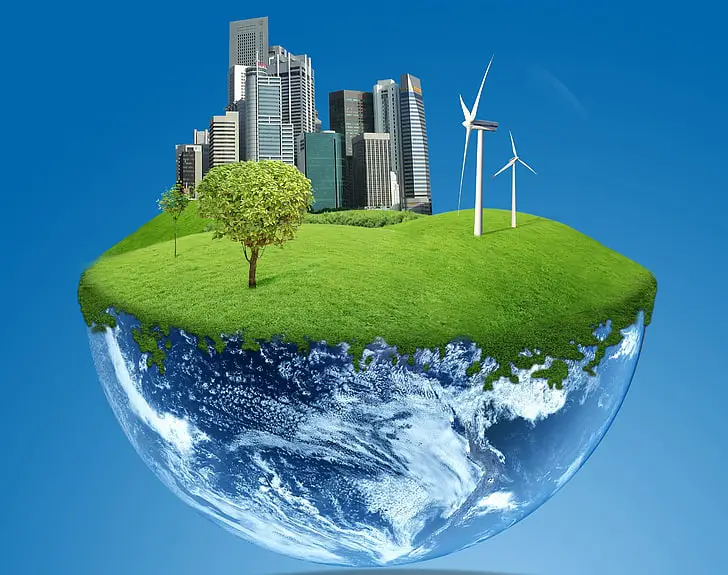
Having explored the goals of green technology, let’s now turn our attention to its impact.
The influence of green technology stretches far and wide, touching every corner of our lives and our planet.
From the air we breathe to the energy powering our homes, green technology is making its mark.
But what exactly does this impact look like? How is it changing our world for the better?
Let’s dive into these questions and uncover the transformative power of green technology!
Positive Impact on the Environment
One of the most significant impacts of green technology is its positive effect on the environment.
By promoting sustainable practices and reducing reliance on non-renewable resources, green technology helps to lessen pollution, combat climate change, and preserve our planet’s biodiversity.
It’s like giving our planet a much-needed breath of fresh air.
From cleaner waterways to healthier forests, the environmental benefits of green technology are both profound and far-reaching.
Improvement of Quality of Life
Green technology doesn’t just benefit the environment; it also improves our quality of life.
By promoting cleaner air, safer water, and more efficient energy use, green technology contributes to healthier living conditions.
Imagine living in a world where the air is clean, the water is pure, and energy is abundant and sustainable.
That’s the world green technology is helping to create. It’s about making our homes, communities, and cities healthier and more livable.
Economic Viability
Lastly, let’s talk about the economic viability of green technology.
Some might think that going green is expensive, but the reality is that green technology can offer significant economic benefits.
From creating new jobs in the renewable energy sector to reducing energy costs through efficiency, green technology can stimulate economic growth and development.
Plus, as the demand for sustainable products and services grows, businesses that embrace green technology are likely to have a competitive advantage.
So, it’s not just good for the planet; it’s good for the wallet too!
What Are The Challenges in Adopting Green Technology?
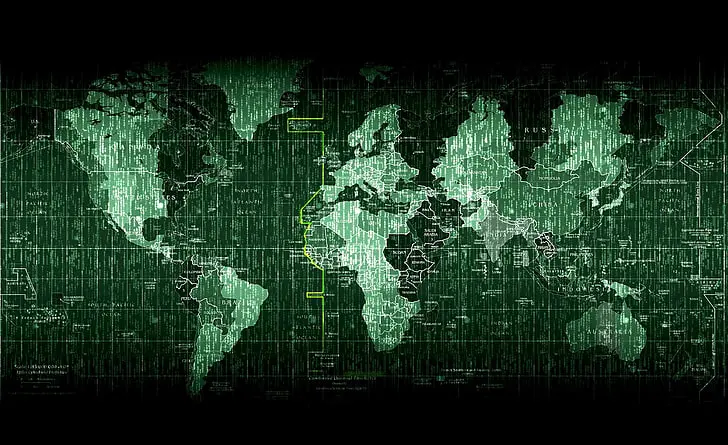
While green technology holds immense promise for a sustainable future, it’s not without its challenges.
Like any significant change, the shift towards green technology comes with hurdles we need to overcome.
From economic factors to technological barriers, these challenges can sometimes seem daunting.
But don’t worry, every problem presents an opportunity for innovative solutions.
So, let’s delve into these challenges and understand what they mean for the future of green technology.
Reduced Energy Consumption
One of the key challenges in adopting green technology is the need for reduced energy consumption.
While green tech aims to make energy use more efficient, it also requires us to change our habits and lifestyles.
This can be a significant hurdle, especially in societies accustomed to high energy consumption.
It’s about learning to do more with less and embracing a more sustainable way of living.
Reduced Waste
Reducing waste is another challenge. Green technology promotes a circular economy where waste is minimized, and resources are reused or recycled.
However, achieving this requires a shift in how we produce and consume goods.
It’s not just about recycling more; it’s about designing products and systems that generate less waste in the first place.
Improved Product Design and Performance
Green technology also demands improved product design and performance.
Products need to be designed not just for efficiency and functionality, but also for longevity and end-of-life recyclability.
This requires innovation and a departure from traditional product design principles, which can be a significant challenge.
Reduced Business Expenses
While green technology can ultimately lead to cost savings, the initial investment can be high.
Businesses may face challenges in securing the necessary funding to implement green technologies.
However, with the potential for long-term savings and increasing consumer demand for sustainable practices, the investment can be well worth it.
Eco-friendly Agriculture
In the realm of agriculture, the shift towards more eco-friendly practices can be a significant challenge.
This involves everything from reducing the use of harmful pesticides and fertilizers to implementing more sustainable farming practices.
It’s a complex issue that requires a balance between maintaining productivity and protecting the environment.
Reduced Water Consumption
Water is a precious resource, and green technology aims to reduce its consumption.
However, achieving this can be a challenge, particularly in industries and regions where water use is high.
It requires innovative solutions and a commitment to conservation.
Reduced Air Pollution
Reducing air pollution is another key goal of green technology.
However, this can be a challenge, particularly in urban areas and industries where pollution levels are high.
It requires a multifaceted approach, including cleaner energy sources, improved industrial processes, and stricter regulations.
Reduced Carbon Footprint
Finally, reducing our carbon footprint is a significant challenge of green technology.
While renewable energy sources and energy-efficient technologies can help, this also requires a societal shift towards more sustainable lifestyles.
It’s a global challenge, but one that green technology is uniquely equipped to tackle.
Examples of Green Technology
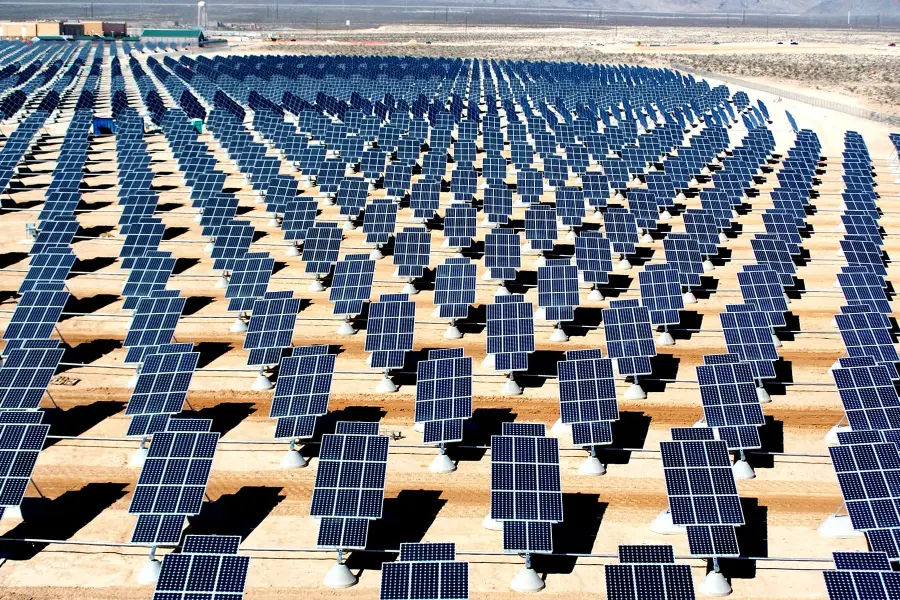
As we navigate the challenges and opportunities of green technology, it’s helpful to look at some real-world examples.
These are the success stories that show us what’s possible when we embrace the principles of green technology.
From innovative farming techniques to breakthroughs in renewable energy, these examples provide a glimpse into a more sustainable future.
So, let’s take a closer look at how green technology is making a difference in the world today.
Vertical Farming
Vertical farming is a fantastic example of green technology in action.
Imagine a farm that stretches not across vast fields, but upwards in a compact, urban building.
That’s vertical farming. It’s a revolutionary approach to agriculture that allows us to grow crops in controlled environments, using less land and water than traditional farming.
Plus, because vertical farms can be located in urban areas, they reduce the need for transportation, resulting in lower carbon emissions.
It’s a fresh take on farming that’s helping to feed our growing population in a sustainable way.
No-till Farming
No-till farming is another green technology that’s transforming agriculture.
As the name suggests, it’s a way of growing crops without disturbing the soil through tillage.
Why is this important? Well, tilling can lead to soil erosion and loss of nutrients.
No-till farming helps to preserve the soil, maintain its nutrients, and improve its ability to capture carbon from the atmosphere.
It’s a simple yet powerful way to make farming more sustainable.
Changing Dietary Habits
Finally, let’s talk about changing dietary habits. You might be wondering, What does this have to do with green technology?
Well, technologies like plant-based meat substitutes and precision fermentation are enabling us to create foods that have a much lower environmental impact than traditional animal-based foods.
By changing our dietary habits and embracing these innovative foods, we can reduce our carbon footprint and contribute to a more sustainable food system.
It’s a delicious way to make a difference!
Green Technology Adoption FAQs

We’ve covered a lot of ground on our journey through green technology, but you might still have some questions.
That’s why we’ve put together this handy FAQ section. Here, we’ll tackle some of the most common questions about green technology, from its goals to its real-world applications.
Whether you’re a green tech enthusiast or just curious about the topic, these FAQs are here to quench your thirst for knowledge. So, let’s dive in and answer some questions!
Q: What are the five goals of green technology?
A: The five goals of green technology are:
Create a Balance of Energy Sources: This involves reducing our reliance on non-renewable energy and increasing the use of renewable sources.
Save Renewable Energy Sources: This goal aims to ensure that the consumption of renewable energy does not exceed its production.
Save Nature From Over Exploitation: Green technology seeks to ensure that human activities do not exceed nature’s capacity to regenerate and absorb waste.
Creating Clean Energy: This involves promoting energy sources that emit little to no greenhouse gases.
Energy Efficiency: This goal is about making our energy use more efficient, so we do more with less.
Q: What are the important green technologies?
A: Some important green technologies include solar and wind energy, electric vehicles, energy-efficient appliances, and sustainable agriculture practices like vertical and no-till farming.
These technologies are crucial in reducing our environmental impact and moving towards a more sustainable future.
Q: What is the refuse goal of green technology?
A: The refuse goal of green technology refers to the principle of waste reduction.
This involves designing products and systems that generate less waste, promoting a circular economy where resources are reused or recycled, and encouraging changes in consumer behavior to reduce waste.
It’s all about refusing unnecessary waste and embracing more sustainable practices.
5 Goals of Green Technology Conclusion

As we reach the end of our journey through the world of green technology, it’s time to reflect on what we’ve learned.
From understanding the goals of green technology to exploring its impacts, challenges, and real-world examples, we’ve covered a lot of ground.
But remember, this is just the beginning. The world of green technology is constantly evolving, offering new solutions and opportunities for a sustainable future.
So, let’s wrap things up and look ahead to what the future might hold for green technology.
Recap of the Goals of Green Technology
Let’s take a moment to revisit the goals of green technology. First, it aims to create a balance of energy sources, shifting from non-renewable to renewable energy.
Second, it seeks to save renewable energy sources, ensuring we don’t consume more than we produce.
Third, it strives to save nature from overexploitation, promoting sustainable practices that respect our planet’s capacity.
Fourth, it’s all about creating clean energy, reducing greenhouse gas emissions.
And finally, it’s about energy efficiency, making the most of our resources. These goals are the guiding principles that drive green technology forward.
The Future of Green Technology
Looking ahead, the future of green technology is bright.
As we continue to face environmental challenges, the need for green technology will only grow.
We can expect to see more innovations in renewable energy, more sustainable farming practices, and more efficient products.
We’ll also see green technology playing a bigger role in our everyday lives, from the cars we drive to the food we eat.
But perhaps most importantly, we’ll see a growing awareness of the importance of sustainability and a greater commitment to protecting our planet.
The future of green technology is not just about new gadgets and solutions; it’s about a shift in mindset towards a more sustainable way of living.

